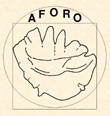




Site best viewed with 1024 x 768 resolution
|
Related Links Here are some links related with fish otoliths. The list is not exhaustive. |
|
Research:
> 7th IOS symposium. 2023 In Viña del Mar, Chile
: The 7th IOS symposium, which will be held from 9 to 13 October, 2023, in Viña del Mar Chile.
> Prof. A.N. Popper. Laboratory of Aquatic Bioacustics
: The Aquatic Bioacoustics Laboratory (ABL) is primarily involved in the study of hearing by aquatic organisms. Most work in the laboratory focuses on fishes, although studies have been done with other non-mammalian vertebrates. The fish studies focus on various aspects of hearing that range from behavioral investigations to determine what an animal can hear to physiological investigations of the responses of the ear and brain.
> Dr. Secor's lab
: Dr. Secor's research laboratory group at the Fisheries Dept. belonging to the the Chesapeake Biological Laboratory (CBL) wich is part of the Center for Environmental Science at the University of Maryland : It offers an users manual of Otolith Removal and Preparation for Microstructural Examination.
> Laboratory of Applied Bio-Acoustics (LAB)
: The Laboratory of Applied Bio-Acoustics (LAB) directed by Dr. Michel André has the clear objective to respond with technological solutions to the progressive deterioration of the seas, limiting the effects of anthropogenic noise and contributing to the sustainable development of human marine activities. The research outcome will answer the increasing demand from local, national and European administrations and from the society itself, by providing the necessary expertise on the control mechanisms and a better understanding of the marine noise pollution.
> Fonctionnal and Evolutionary Morphology Laboratory. Liège Université
: The laboratory of Functional and Evolutionary Morphology has a long tradition in the study of musculo-skeletal systems. The starting point of our unit research concerns the ecomorphology. We aim to understand the (functional) morphology and evolution of Teleost fishes and Arthropods in order to understand how organisms can adapt to their (changing) environment. We use as most as possible multidisciplinary approaches by combining comparative and experimental methods of analysis, studies in the laboratory and in the field to describe and understand at best the relationships between the animal performance, its behavior and its environment.
Database:
> OsteoBase: Interactive exploration for osteology
: OsteoBase is an interactive website designed for osteological exploration, from the entire skeleton to constituting bones. The interface provides access to pictures of a collection of osteological items, organized to compare these osteological items in different taxa.
> NMITA: Neogene Marine Biota of Tropical America
: NMITA contains images and information on taxa collected as part of two large multi-taxa fossil sampling programs: (1) the Panama Paleontology Project (PPP) coordinated by the Smithsonian Tropical Research Institute in Panama; (2) the Neogene Paleontology of the northern Dominican Republic (DR) project coordinated by the Natural History Museum in Basel, Switzerland. Partial information is currently available for fishes and other zoological taxa.
> Interactive guide of identification of fish from the SE North Sea
: Is an Interactive guide of identification of fish from the SE North Sea, Wadden Sea and adjacent fresh waters by means of otoliths and other hard parts. Authors: Leopold M.F., C.J.G. van Damme, C.J.M. Philippart & C.J.N. Winter (2001).
> GBIF: Otolith reference colection from ICM-CSIC
: The Global Biodiversity Information Facility (GBIF) was established by governments in 2001 to encourage free and open access to biodiversity data, via the Internet. Through a global network of countries and organizations, GBIF promotes and facilitates the mobilization, access, discovery and use of information about the occurrence of organisms over time and across the planet.
> Catálogo de otolitos de Bocas del Toro, Panamá
: Is the first otolith collection developed in Panamà area by Brigida de Gracia in O'Dea's Lab from Smithsonian Tropical Research Institute.
> Brodeur's Guide to Otoliths of Some Northwest Atlantic Fishes
: This is the companion website for the second edition of Brodeur (1979). The second edition includes the original images of the sagittal otoliths for 51 common fishes of the Northwest Atlantic. Portions of the text have been updated and new citations have been included to give it a more contemporary perspective.
> Collection of Fish Otoliths from the Southeastern-Southern Brazil (COSS-Brasil)
: The Collection of Teleosts Fish Otoliths from the Southeastern-Southern Brazil (COSS-Brasil) is headquartered at the Laboratório de Ictiofauna e Crescimento - LABIC (Fish Fauna and Growth Laboratory) of the Oceanographic Institute of the University of São Paulo - (IOUSP), under the curatorship and accountability of the Dr. Prof. Carmen L. D. B. Rossi-Wongtschowski. Such otolith collection is stored in a regularly updated database, presently containing a total of 51923 otoliths corresponding to 201 different species and 73 families from the Southeast-South Atlantic area. COSS-Brasil website offers an open online catalogue of the otolith fishes. Click here to access the complete listing of species.
> Otolith Atlas of Taiwan Fishes by Lin and Chang 2012
: A total of 1004 species belonging to 30 orders, 165 families, and 488 genera are presented. In addition, this website also contains 400 otolith specimens from ASIZ museum , these photos are not included in the book
|